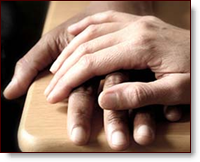I recently viewed a
TED video about the impact of divorce on children. Professor Tamara Afifi, a professor at the University of California Santa Barbara, presented the results of her research.
Here are some of her findings:
CONFLICT BETWEEN PARENTS, NOT DIVORCE, HARMS KIDS
Conflict between parents during marriage can be more harmful to children than a divorce. The differences between children of divorced parents and parents who are still married are not that great. What makes a difference is whether the conflict between parents continues, whether they are divorced or still married. Children are hurt most by parents in conflict.
DIFFERENCES IN DECADES
The impact on children of divorce in the 70’s, 80’s and 90’s has been different. In the 1970’s, there was a higher impact on children, which she attributes to the fact that divorces then were the result of bad marriages and more conflict. In the 1980’s, the impact was lower because people were divorcing for reasons having more to do with personal growth and self actualization.
There may have been less conflict and better communication. In the 1990’s, the impact has been higher which she suggests was due to the closer relationship children had with their parents, communicating daily, and more involved in each other’s lives. Children became more involved in the divorce because they were generally more involved in their parents’ lives.
NEED BOUNDARIES WITH YOUR CHILDREN
There is a danger with this closer, more involved relationship between parents and their children. Children should not be burdened with their parents’ hurt or anger at the other parent or put into the role of messenger. One child described her mother as her “best friend” who asked her daughter for advice about an affair. Kids shouldn’t have to deal with this.
A child shouldn’t be asked to “remind your mom” or asked “why doesn’t your dad tell me” about something. This puts them in the middle of the conflict or forces them to align with one parent. Establish boundaries about what is the adult conversation and what is the conversation with children about the divorce.
AVOID HURTING YOUR CHILDREN DURING DIVORCE
What can divorcing parents do to lessen the impact on their children? Work together on a co-parenting plan which redefines your roles following the divorce, work with a child specialist to establish the boundaries between adult and child issues in the divorce, improve your communication with each other, defuse emotions, and refuse to engage in bad mouthing the other parent.
In the collaborative divorce process, child specialists and coaches can help you in all of these areas.
 In a collaborative divorce process – there are usually tissues on the table. When a client first comes into an attorney’s office to tell their story or learn about divorce, it can be emotional and scary. Some people cry. Some of those tears come from sadness, fear, or worry about the future.
Some people feel guilt or are mourning the loss of a relationship. Whatever the emotions are, in collaborative divorce, it is alright to express them. Indeed, expression of emotion can be key to the process – help clients process the transition and be more honest in the negotiations.
Sometimes, clients cry quietly and silently in the process. The team may keep the process moving or take time to acknowledge the emotion. Clients can always take a break or ask for a moment alone. Silence may be a useful way to acknowledge the emotion. At other times, emotions may run hot and anger can result in intensified behavior. The team may choose to discuss the emotions or use a coach (mental health professional) to help keep emotions productive in the meetings. Clients may cry during joint meetings or when meeting with other professionals. Some clients cry while a lot others hardly cry.
In a recent joint meeting, two clients were sharing each of their desires to spend Christmas morning with the children. The attorneys asked each client to express their personal reasons in the meeting. In front of the attorneys and the other spouse, they each shared their thoughts on this subject. Wife cried during her turn – the emotions were pure and real. After a moment of silence, Husband’s attorney acknowledged her emotion, saying “I know that was hard and I thank you for sharing your thoughts.” Husband expressed empathy as well. When he spoke, he acknowledged her by saying “It’s hard for me to share my thoughts now because I know how important this is to you.”
Emotion is real and the collaborative process allows for its expression. Indeed, there will always be tissues on the table.
In a collaborative divorce process – there are usually tissues on the table. When a client first comes into an attorney’s office to tell their story or learn about divorce, it can be emotional and scary. Some people cry. Some of those tears come from sadness, fear, or worry about the future.
Some people feel guilt or are mourning the loss of a relationship. Whatever the emotions are, in collaborative divorce, it is alright to express them. Indeed, expression of emotion can be key to the process – help clients process the transition and be more honest in the negotiations.
Sometimes, clients cry quietly and silently in the process. The team may keep the process moving or take time to acknowledge the emotion. Clients can always take a break or ask for a moment alone. Silence may be a useful way to acknowledge the emotion. At other times, emotions may run hot and anger can result in intensified behavior. The team may choose to discuss the emotions or use a coach (mental health professional) to help keep emotions productive in the meetings. Clients may cry during joint meetings or when meeting with other professionals. Some clients cry while a lot others hardly cry.
In a recent joint meeting, two clients were sharing each of their desires to spend Christmas morning with the children. The attorneys asked each client to express their personal reasons in the meeting. In front of the attorneys and the other spouse, they each shared their thoughts on this subject. Wife cried during her turn – the emotions were pure and real. After a moment of silence, Husband’s attorney acknowledged her emotion, saying “I know that was hard and I thank you for sharing your thoughts.” Husband expressed empathy as well. When he spoke, he acknowledged her by saying “It’s hard for me to share my thoughts now because I know how important this is to you.”
Emotion is real and the collaborative process allows for its expression. Indeed, there will always be tissues on the table.  In a collaborative divorce process – there are usually tissues on the table. When a client first comes into an attorney’s office to tell their story or learn about divorce, it can be emotional and scary. Some people cry. Some of those tears come from sadness, fear, or worry about the future.
Some people feel guilt or are mourning the loss of a relationship. Whatever the emotions are, in collaborative divorce, it is alright to express them. Indeed, expression of emotion can be key to the process – help clients process the transition and be more honest in the negotiations.
Sometimes, clients cry quietly and silently in the process. The team may keep the process moving or take time to acknowledge the emotion. Clients can always take a break or ask for a moment alone. Silence may be a useful way to acknowledge the emotion. At other times, emotions may run hot and anger can result in intensified behavior. The team may choose to discuss the emotions or use a coach (mental health professional) to help keep emotions productive in the meetings. Clients may cry during joint meetings or when meeting with other professionals. Some clients cry while a lot others hardly cry.
In a recent joint meeting, two clients were sharing each of their desires to spend Christmas morning with the children. The attorneys asked each client to express their personal reasons in the meeting. In front of the attorneys and the other spouse, they each shared their thoughts on this subject. Wife cried during her turn – the emotions were pure and real. After a moment of silence, Husband’s attorney acknowledged her emotion, saying “I know that was hard and I thank you for sharing your thoughts.” Husband expressed empathy as well. When he spoke, he acknowledged her by saying “It’s hard for me to share my thoughts now because I know how important this is to you.”
Emotion is real and the collaborative process allows for its expression. Indeed, there will always be tissues on the table.
In a collaborative divorce process – there are usually tissues on the table. When a client first comes into an attorney’s office to tell their story or learn about divorce, it can be emotional and scary. Some people cry. Some of those tears come from sadness, fear, or worry about the future.
Some people feel guilt or are mourning the loss of a relationship. Whatever the emotions are, in collaborative divorce, it is alright to express them. Indeed, expression of emotion can be key to the process – help clients process the transition and be more honest in the negotiations.
Sometimes, clients cry quietly and silently in the process. The team may keep the process moving or take time to acknowledge the emotion. Clients can always take a break or ask for a moment alone. Silence may be a useful way to acknowledge the emotion. At other times, emotions may run hot and anger can result in intensified behavior. The team may choose to discuss the emotions or use a coach (mental health professional) to help keep emotions productive in the meetings. Clients may cry during joint meetings or when meeting with other professionals. Some clients cry while a lot others hardly cry.
In a recent joint meeting, two clients were sharing each of their desires to spend Christmas morning with the children. The attorneys asked each client to express their personal reasons in the meeting. In front of the attorneys and the other spouse, they each shared their thoughts on this subject. Wife cried during her turn – the emotions were pure and real. After a moment of silence, Husband’s attorney acknowledged her emotion, saying “I know that was hard and I thank you for sharing your thoughts.” Husband expressed empathy as well. When he spoke, he acknowledged her by saying “It’s hard for me to share my thoughts now because I know how important this is to you.”
Emotion is real and the collaborative process allows for its expression. Indeed, there will always be tissues on the table. 


